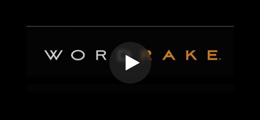Maybe you’ve heard folks complaining about how young people tend to verb their nouns—adulting comes to mind. These new word constructions come from the need to make a static thing dynamic. In the case of adulting, the fact of living an adult life isn’t just a state of being, but takes constant and active maintenance. Verbing your nouns shows this constant state of motion.
Continue readingIf your job requires you to write regularly, consider your readers and today’s changing exposure to words when drafting your work. With every day’s onslaught of content from emails, text messages, social media, and meetings—both on and offline—modern office workers don’t have the time or patience to read unnecessary words to get to your point. Wordy writing is a great way to get someone to close an email or dump a proposal without finding out what it’s about.
Continue readingAs paralegals, time is money. Our days are filled with multitasking and responding to attorney and client demands. We appreciate the latest and greatest software that helps us perform with speed and accuracy. It’s necessary to pick software that fits our writing needs and expedites the process of producing legal documents. But we must also know how to use our software to its full potential so we can get the most benefit from it, in turn benefiting our clients.
Continue readingNominalizations—verbs or adjectives that have been converted into nouns—are common sources of obscurity, wordiness, and needless complexity in professional writing. While nominalizations may seem more formal when they appear in phrases like “reach a decision” or “make an assumption,” that requires equating formality with stodginess.
Continue readingEffective business communication relies on clear, concise, specific, and meaningful writing. Clichés fail all four requirements. In your first draft, a cliché may feel so easy and familiar to write that it seems irreplaceable. But, upon revision, you’ll see that clichés are unoriginal, broad generalizations—and often redundant. Delete them. Replace them. Your readers will reward you with their attention.
A major advantage of eliminating clichés from your business writing is the clarity and precision it brings. Without the clutter of overused phrases, your writing will be more persuasive and impactful, and you’ll be seen as more authentic, authoritative, and trustworthy.
Continue readingBeing understood in writing can be complex. The words we use express our expectations and tone, but readers often misinterpret the intention the author wishes to convey. In this edition of our business writing education series, author and book coach Anne Janzer explores how our expression of authority can unintentionally derail teamwork, and what to do about it.
Antonio manages a distributed team with people in different time zones. The team interacts daily through emails or messaging.
Antonio is frustrated that the team doesn’t collaborate well unless they’re all in a room together. When he tosses out an idea over email, either everyone agrees, or no one responds.
Continue readingIt’s one thing to want to communicate clearly, but knowing how to do it is a different matter. The International Organization for Standardization (ISO) made it easier last month by releasing Plain Language standards. These standards supply a framework for governments and private entities to make their publications more accessible.
Continue readingParalegals with excellent writing skills know the importance of editing and proofreading their work. After all, clear and effective legal documents are more than words on a page—they can shape opinions and influence lives.
Continue readingLegal writing requires the ability to present clear and persuasive arguments, which is why legal briefs need effective organization and structure. Two tools for enhancing the persuasive power of a brief are the Table of Contents (ToC) and point headings. By leveraging technology and honing organizational skills, lawyers can improve the clarity, coherence, and impact of their writing. Technology can simplify creating, organizing, and editing legal briefs so you can focus on finding the most persuasive arguments. In this article, we’ll discuss the importance of large- and small-scale organization and how to achieve it, as well as technology tools to help you construct a better legal brief.
Continue readingEffective legal writing involves connecting compelling arguments with cited support from relevant legal authorities. A clear understanding of these authorities’ hierarchy amplifies the persuasive strength of your assertions. Mastering tools like the Table of Authorities (TOA) in Microsoft Word can improve your productivity. Combining legal writing skills with technological assistance elevates the quality of your work, ensures adherence to court timelines, and helps you concentrate on your argumentation.
Continue reading












